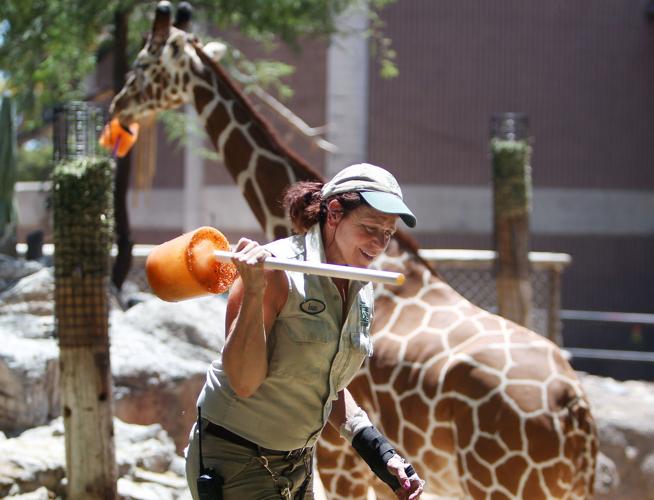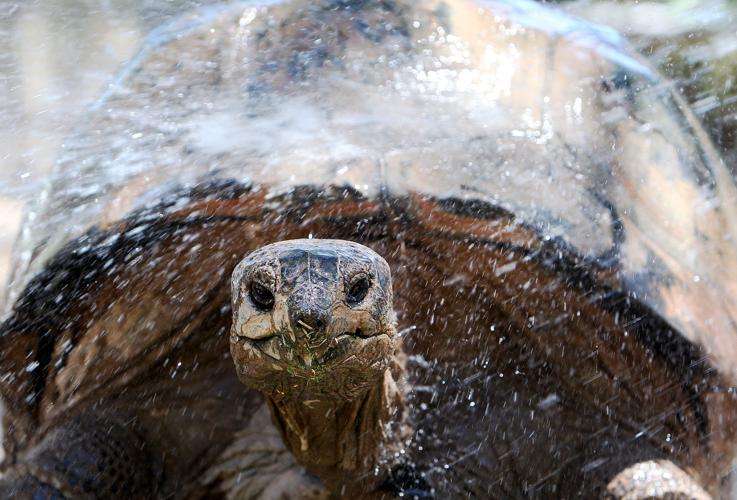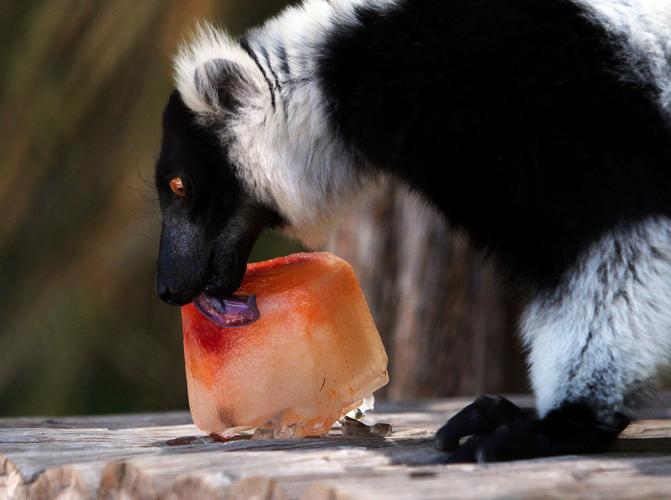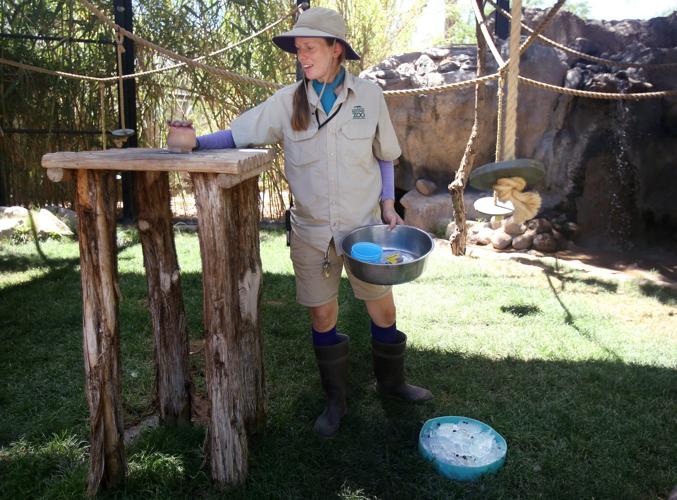Bears at the Reid Park Zoo might cool off with a tasty “fishsicle” as temperatures soar this weekend.
A giant tortoise will beat the heat with the help of a hosing down by a zoo keeper.
Other critters will likely retreat from their sun-baked enclosures to “bedrooms” chilled by a swamp cooler.
Those are some of the ways in which animals at the zoo will get a little assistance in coping with expected withering heat in the coming days.
“The zookeepers work very hard to make sure the animals are comfortable at this time of year,” said Jason Jacobs, zoo administrator. “Our keepers will keep a close eye on the animals this weekend. They’ll watch for any signs of heat stress” and also take measures to keep animals as cool as possible.
CLIMATE CONSIDERATIONS
One key strategy for limiting heat stress in the zoo’s approximately 400 animals is implemented long before the arrival of the scorching heat of summer.
“First and foremost, we go through a selection process for animals that can adapt well to Tucson’s weather patterns, or that come from areas with similar patterns,” Jacobs said. “It’s about getting animals from somewhat similar climates and then designing zoo habitats that give animals the natural features they need to take care of themselves — things such as mud wallows, pools and sufficient shade.”
That tailored selection process means that the zoo’s animals “are well adapted to handle Tucson’s weather,” Jacobs said. “We don’t have animals like musk ox or reindeer that wouldn’t do well here.”
Still, temperatures in the coming days could soar beyond what’s typical for Tucson, and zookeepers will take steps to minimize the heat’s impact.
COOLING THE CRITTERS
“Our keepers will provide animals with cooling treats” similar to Popsicles, Jacobs said. “We’ll have ‘fishsicles’ for the bears and perhaps the otters. And there are ‘bloodsicles’ for lions and tigers and jaguars.”
Other measures described by Jacobs and a “Staying Cool at the Zoo” entry on the zoo’s website include:
- “We’ll hose down a giant tortoise. They like to have a shower in the heat, so we’ll do that for them,” Jacobs said.
- “Most cats aren’t crazy about water, but tigers enjoy plunging into pools and streams,” says the website entry. “Swimming is a great strategy for beating the heat in their native Asian habitat — and here in Arizona.”
- “Behind the scenes, we have holding areas, or bedrooms, with swamp coolers to keep the animals cool,” Jacobs said. “We have them running during extremely hot weather.”
Kat Rumbley, spokeswoman for the Arizona-Sonora Desert Museum, said the museum also uses coolers during extremely hot weather in a few exhibits including those of a bear and mountain lion.
ADVICE FOR VISITORS
Zoo summer hours are 8 a.m. to 3 p.m., and Jacobs advised visiting early in the day.
“If you want to see animals active, get here first thing in the morning,” he said. “If people get here at noon on Sunday expecting to see active animals, they won’t. Some animals will be sleeping. Animals like elephants will be in the shade and not very active during the heat of the day.
“If you are particularly sensitive to heat, you might want to wait for a visit until it cools a bit,” he added.
Zoo admission is $9 for visitors 15 to 61, $7 for people 62 or older, and $5 for children from 2 to 14. Kids younger than 2 get in free.








